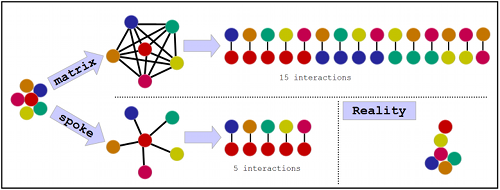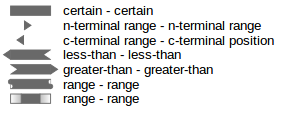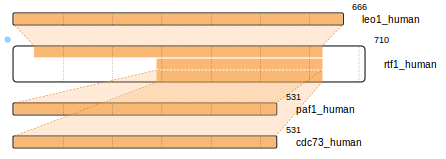Searching Interactions (Search Tab)
As you can see in this tab we are now trying to give you more targeted
choice to do your queries, please note that the examples provided
in this tab are live links so you can simply click them to see the resulting
interactions sets.
Using the Quick Search
In this search panel you are free to type anything that might relate
to interactions, whether it is properties of their interactor (gene name,
identifiers, GO term…) or more specific to the interaction like publication,
authors, experimental detection method, ...
Some examples:
-
Try the query: imatinib
This is a drug for which we have curated a number of interactions.
Once you press the search button you should be taken to the Interaction Tab that lists 130 binary interactions.
If you want to construct more complex queries we recommend you take a look
at the Molecular Interaction Query Language, accessible from the quick
search panel.
-
Try the query: species:yeast AND type:"direct interaction"
This query selects all interactions involving yeast interactors that have been shown
to have direct interactions. If you customize the column display of the interaction tab, you will see that not only “direct interaction” have been selected but also children terms in the PSI-MI ontology.
Using the Ontology Search
Open the Rearch Tab. This panel is specialised to give you an easy
access to ontology search. So far you can search on 4 ontologies:
- Gene Ontology
- InterPro
- PSI-MI
- ChEBI
Whenever you start typing a query in this search panel, the system will
search as you type and propose a list of matching controlled vocabulary terms.
You can then select one of them and select matching interactions.
For example, type: cancer
You will be presented with a few choices, please note that each term is
followed by the count of matching interactions in the IntAct database.
Select a term with the mouse or using the keyboard cursor keys and you will
be taken to the interaction tab.
Searching the Compound chemical structure
In this panel you will be able to draw all or part of a chemical structure
and search for chemical compounds. If you get any matched, you can then see
all interactions involving them.
First you have to open up the chemical search panel so that the applet
can load, it might take a few seconds. Then you can start drawing your
structure, for instance:
Once you have drawn your structure, select Similarity and press Search.
You should be presented with a list of matching compound. Now choose one
molecule and click the link: IntAct interactions. You will be taken to the
interaction tab to review the data.




